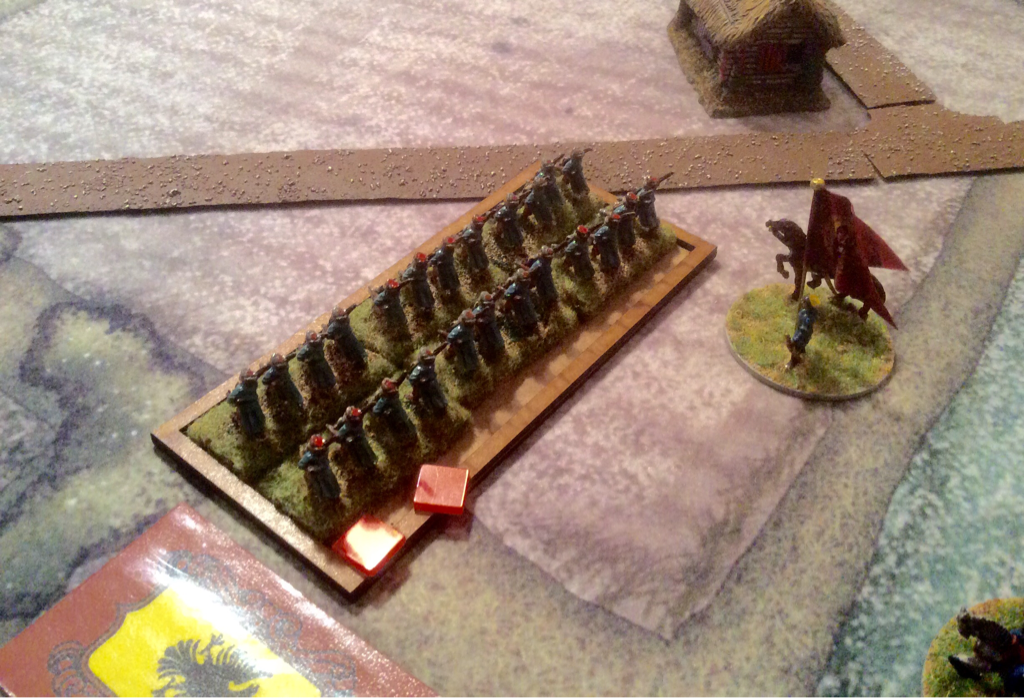|
Our first run through of the Tercios rules had a varied selection of troop types to see how they coped under the rules. We played turn one collaboratively, placing order counters face up and discussing their expected effects. From turn two we placed orders face down but still agreed to set up some particular situations to see how they played out.
Our conclusions were: It is great fun and quick to learn. Placing orders really makes you think about your force. The reaction function of each order enlivens the game no end and allows opposing units to interact naturally and convincingly. For example, some Polish Hajduks assaulted a unit of Registered Cossacks, who fired at them as they closed, inflicting some damage but not enough to stop the attack. However, the Attack in turn wasn't as decisive as it could have been so the Hajduks disengaged. Cavalry combat can be brutally quick, especially if lances are involved. The rules for commanders seem a bit complicated and there are a great many traits available to choose from. I expect they will feel less complicated with experience and it is welcome that commander models have a real part to play in the game. But I'm pretty sure already that we will outlaw some of the more 'magical' traits, which behave almost like Warhammer spells. Kingdoms The Kingdoms supplement has some interesting rules to suit Eastern armies, such as the ability of Tatar bowmen to fire and evade. The Tabor and Gulay Gorod are well represented and Polish Hussars are suitably powerful but not superhuman. I had reservations about some of the interpretations of Eastern troop types. For example, Polish Pancerni are billed as heavy, presumably because their name means 'armoured' in Polish. But these troops were no more heavily armoured than Hussars and indeed were originally known as Cossacks: they only acquired their new name after the start of the Khmelnytsky rebellion to distinguish them from Cossack insurgents. Another thing that puzzled me was the absence of Cossack infantry besides the Plastun skirmishing companies. These companies can be converted to Tabor but this isn't enough: I expected to see stats for Registered and Zaporozhian Cossack Infantry as well. The Cossacks were mainly infantry armies at this period, having the reputation of producing the finest infantry in the region. Registered Cossacks constituted some of the Polish army's best Foot regiments, when they weren't in rebellion! And they did not always fight from wagons. I was therefore a bit disappointed but not for long. With these rules it is easy to adapt the stats to suit your own prejudices. So I made up my own stats for formed Cossack infantry, drawing on Musketeer and Hajduk stats, and simply dropped the Pancernis' heavy status. The verdict after first play? Very positive. PS I have gone into a bit of detail because superficial rules reviews are a pet hate. But if I have banged on for too long please excuse me - and let me know, so I don't repeat the mistake in future.
0 Comments
Leave a Reply. |
Archives
November 2023
Categories
All
|

 RSS Feed
RSS Feed